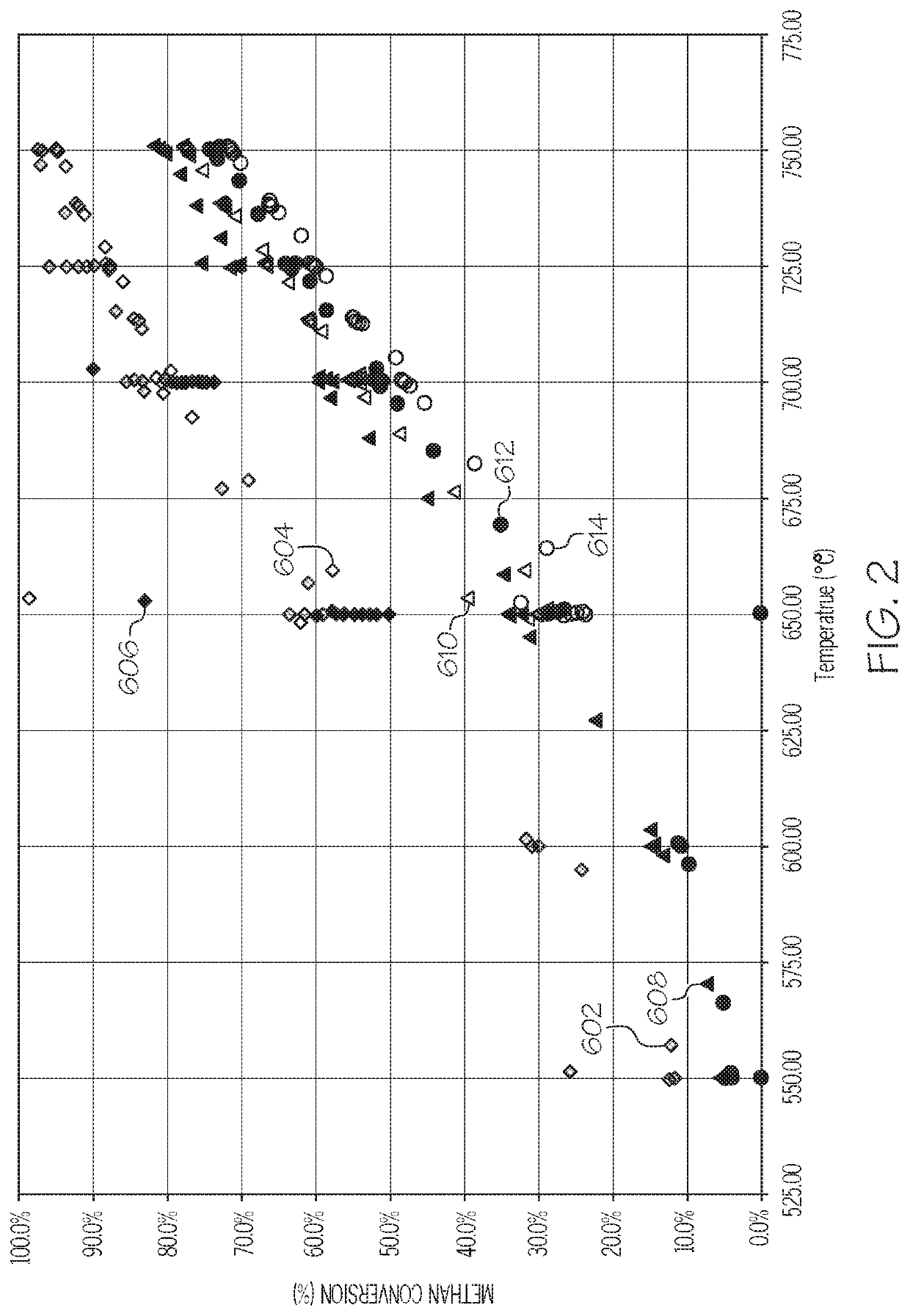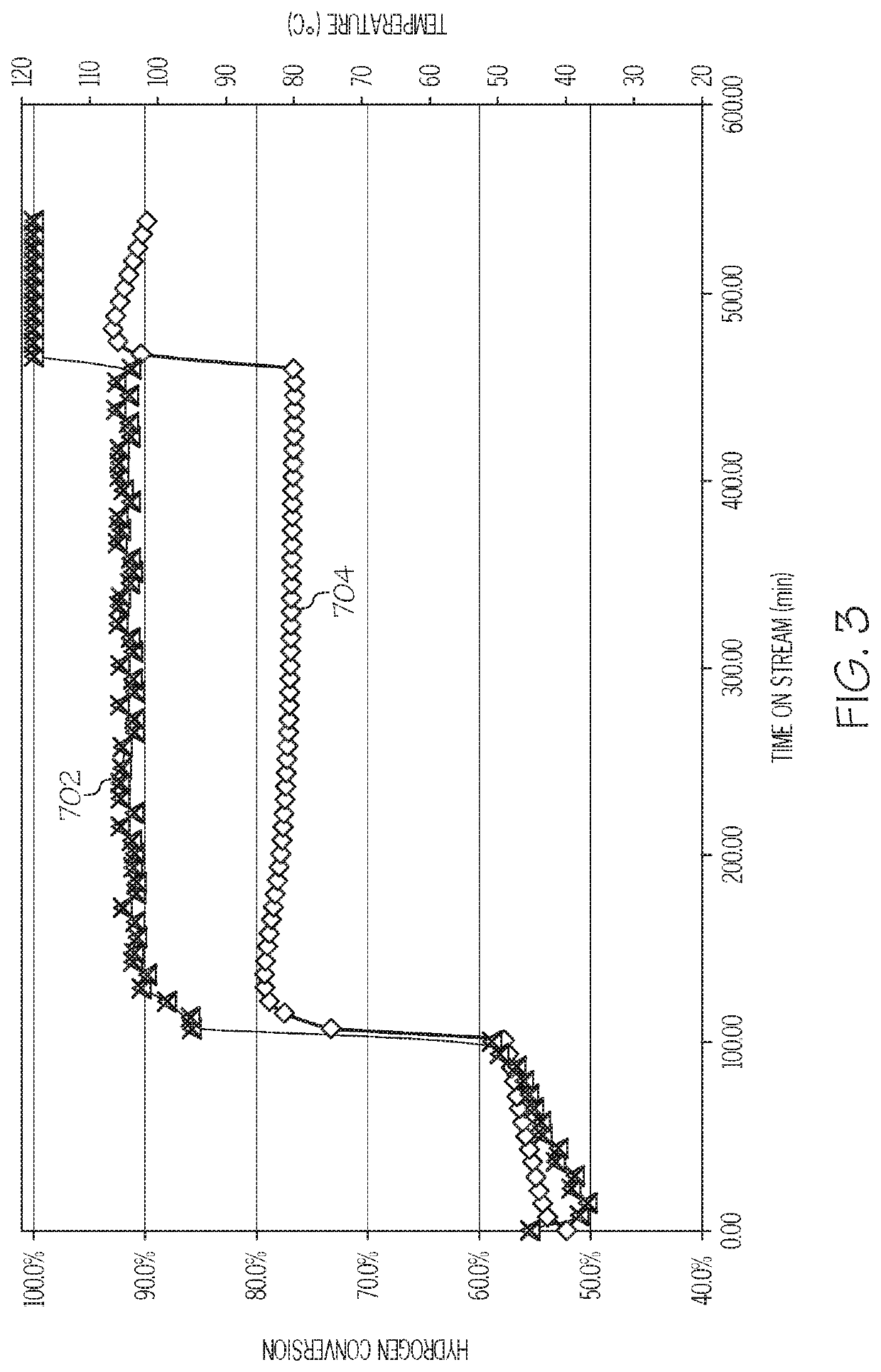Processes for commencing operations of fluidized catalytic reactor systems
- Summary
- Abstract
- Description
- Claims
- Application Information
AI Technical Summary
Benefits of technology
Problems solved by technology
Method used
Image
Examples
Embodiment Construction
[0023]The present disclosure is directed to processes for commencing reactions in a reactor system that utilizes a catalyst. For example, in some embodiments, the process for commencing a continuous reaction in the reactor system may include introducing a catalyst to a catalyst processing portion of the reactor system. The catalyst may be a catalyst capable of catalyzing combustion of the commencement fuel gas. The catalyst initially may have a first temperature of 500° C. or less. The process may further include contacting the catalyst at the first temperature with a commencement fuel gas stream comprising at least 80 mol % commencement fuel gas. Contacting of the catalyst with the commencement fuel gas stream may cause combustion of at least a portion of the commencement fuel gas. The process may further include maintaining the contacting of the catalyst with the commencement fuel gas stream until the temperature of the catalyst increases from the first temperature to a second tem...
PUM
 Login to View More
Login to View More Abstract
Description
Claims
Application Information
 Login to View More
Login to View More - R&D
- Intellectual Property
- Life Sciences
- Materials
- Tech Scout
- Unparalleled Data Quality
- Higher Quality Content
- 60% Fewer Hallucinations
Browse by: Latest US Patents, China's latest patents, Technical Efficacy Thesaurus, Application Domain, Technology Topic, Popular Technical Reports.
© 2025 PatSnap. All rights reserved.Legal|Privacy policy|Modern Slavery Act Transparency Statement|Sitemap|About US| Contact US: help@patsnap.com



